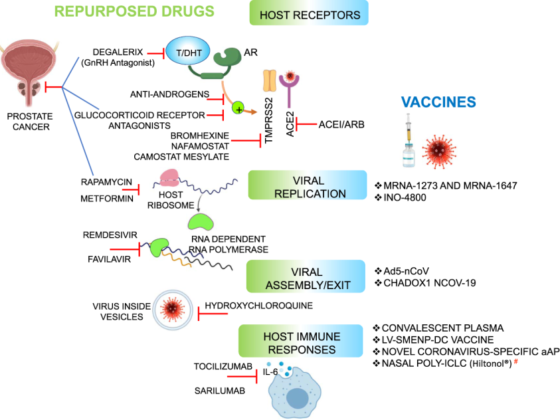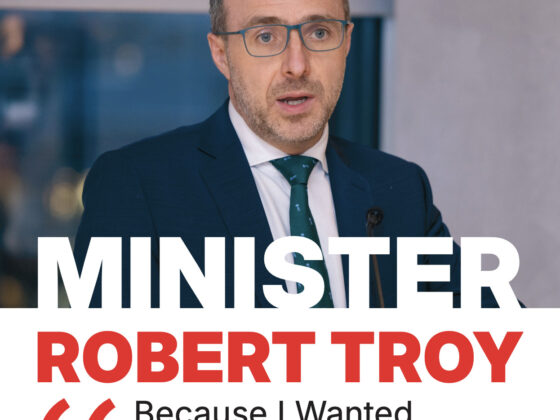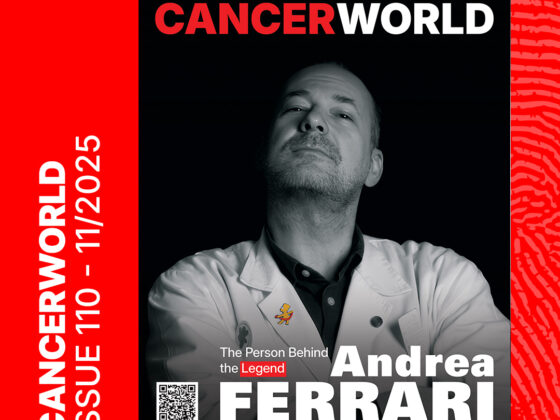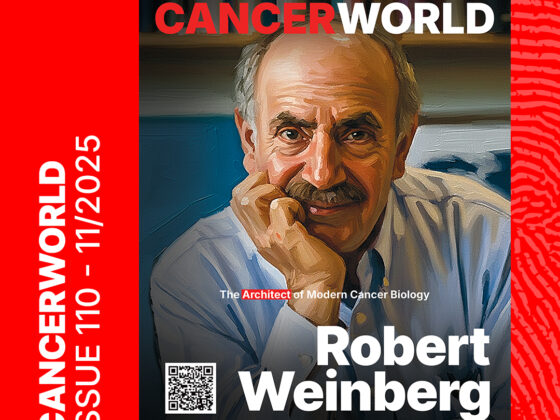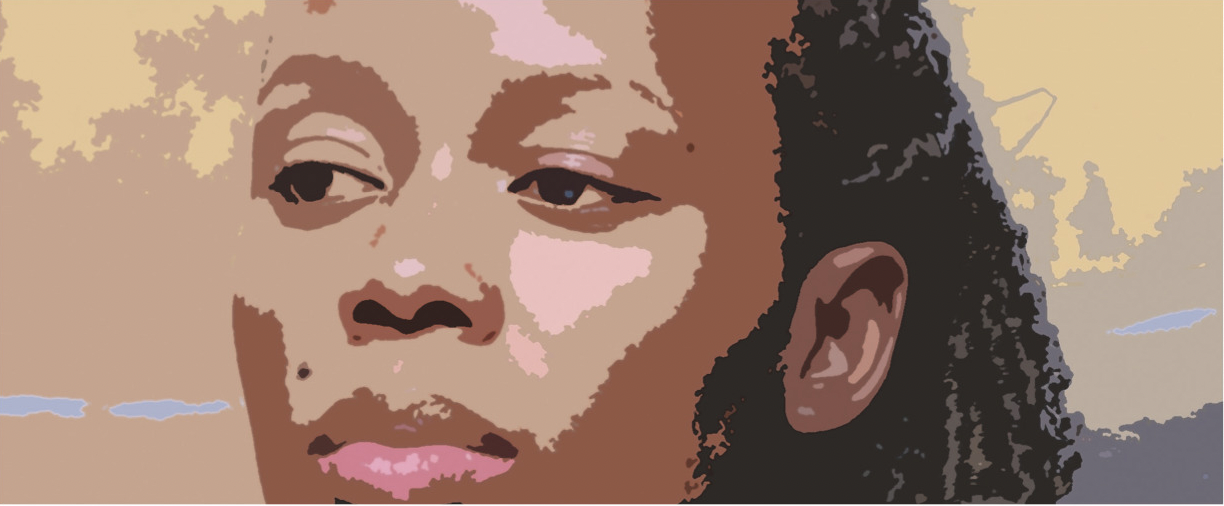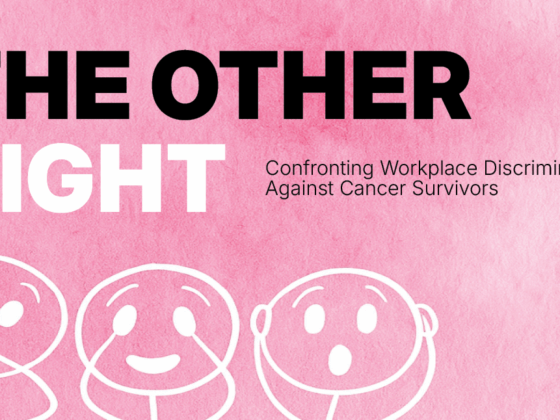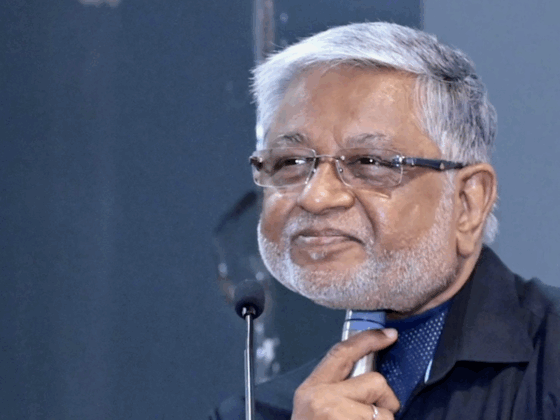One small step for man, one giant leap for mankind – the words Neil Armstrong pronounced as he completed humankind’s first mission to the moon, will – if the European Commission gets its way – soon be pronounced for other missions. Both ‘other missions’ and ‘soon’ need qualifiers: ‘soon’ would mean within a decade, maximum, and which ‘other missions’ are to be completed are still being defined. What we do know, is that one of the missions will focus on cancer
The idea to set missions, and achieve more impact from science and innovation, first arose in the interim report for Horizon 2020, the EU’s framework programme for research and innovation that runs out at the end of 2020. An expert report on the future of European Research, chaired by Pascal Lamy and published in 2017, stated that “Europe does not capitalise enough on the knowledge it has and produces.” One solution: Adopt a mission-oriented, impact-focused approach to address global challenges. By 2019, Cancer was listed firmly among the five areas of ‘global challenges’ Europe should take on. But is a ‘Cancer Mission’ the best way to tackle the growing burden of cancer across Europe? And how would it differ from the usual, multi-year European funding programmes?
During the negotiations for Horizon Europe, the next EU research and innovation framework, the final five mission areas were identified as: adaptation to climate change; cancer; healthy oceans, seas, coastal and inland waters; climate-neutral and smart cities; and soil health and food. For each mission area, a mission board of up to 15 experts, supported by an assembly of an additional 30 experts, is tasked with coming up with at least one, possibly more, concrete missions to be carried out and with specifying actions for how to achieve the goals set. The recommendations are to be formally handed over to the European Commission during the European Research and Innovation Days in September 2020. But the recommendations are just that ‒ non-binding ‒ so what the missions will end up looking like crucially depends on what the European Commission decides.
Bold, inspirational and impactful
What, then, is a mission? Humankind’s most famous mission, to put a man on the moon before the end of the 1960s, is at least an inspiration for Europe’s new funding attempt ‒ but with an important caveat: while putting a man on the moon inspired and stimulated innovation across disciplines and sectors, an element important to Europe’s future missions was missing. “At the EU level, we must be more ambitious in making the link to societal impact,” writes Mariana Mazzucato, Professor in the Economics of Innovation and Public Value at University College London, who wrote the 2018 report on Mission-Oriented Research & Innovation in the European Union, which formed the basis for the EU’s mission strategy.
Other boxes the EU’s missions will have to tick are mentioned in the European Commission’s definition: “A mission is a portfolio of actions across disciplines intended to achieve a bold and inspirational and measurable goal within a set timeframe, with impact for society and policy making as well as relevance for a significant part of the European population and wide range of European citizens.” Or, as Mazzucato sums up in her report: it’s about taking risks, but making sure the successes really matter.
“It’s about taking risks, but making sure the successes really matter”
“We now have to define what this cancer mission should be,” says Bettina Ryll, a member of the Cancer Mission board and founder of the Melanoma Patient Network Europe. “This has to be more than a traditional research programme. It can’t just be Horizon 2020 with an update.” She sees the mission as an opportunity. “The difference this can potentially make for patients is enormous. The European Commission acknowledged that what was done previously [in Horizon 2020] was not optimal, decided to try something new, and is prepared to take such a risk on this level – I have great respect for this.”
Originally, a draft report proposing a concrete mission goal was scheduled for the end of 2019. After delays, partly due to the disruption caused by the COVID-19 pandemic and to previous delays in approving the new European Commission led by Ursula von der Leyen, the interim report of the mission board for Cancer, ambitiously titled ‘Conquering Cancer: Mission possible’, was published on 25 June 2020 and presented on 1 July at a meeting of the European Regions R&I network health working group.
The goal of the mission is: “By 2030, more than 3 million lives saved, living longer and better”. In concrete terms, the mission aims to achieve this, “by accelerating progress of cancer prevention and control programmes and creating more equitable access to these programmes”. The whole continuum of cancer control is to be addressed, from prevention to survivorship support and end-of-life care, for all cancers and all ages.
Walter Ricciardi, Professor of Hygiene and Public Health at the Università Cattolica del Sacro Cuore in Rome, who chairs the Cancer Mission board, describes the approach as “essentially based on three pillars: prevention, treatment and quality of life.”
“On top of this,” he adds, “is understanding, which is concerned with research. We want to understand how to better prevent the preventable, we want to improve the quality of treatment and we want to reduce inequalities in Europe. And we want to grant the best possible quality of life to cancer patients and survivors. To do that, of course, we have to increase research in all these pillars.”
The interim report reflects this approach. The pillars of the mission are defined as improving prevention, diagnostics and treatment of cancer, and quality of life of cancer patients, survivors, their families and carers. The basis for actions is the “understanding of cancers, causal factors and mechanisms, and their impact”. Topping off this approach is the requirement to “ensure equitable access” for citizens in all Member States to high-quality prevention, diagnostics and treatment, care and support.
The report formulated 13 recommendations for achieving the mission’s goal. These are a mix of very specific ideas, such as to “develop an EU-wide research programme to identify (poly-)genic risk scores” (rec. 2), more loose proposals, such as to “transform cancer culture, communication and capacity building” (rec. 13) and “cross cutting actions”, of which probably the most ambitious is to address childhood and adolescent and young adult cancers, to “cure more and cure better” (rec 11). In addition to research into the biology of paediatric cancers, this recommendation also seeks to address the dearth of new therapies for paediatric cancers.
Two of the Mission Board’s recommendations directly address equitable access. While one is formulated as a broad ambition: “Achieve Cancer Health Equity in the EU across the continuum of the disease” (rec. 9), the other proposes a concrete action, to “Set up a network of Comprehensive Cancer Infrastructures within and across all EU Member States to increase quality of research and care” (rec. 10). The latter recommendation foresees that each Member State should have at least one “Comprehensive Cancer Infrastructure”, which would collectively form an international network that shares experiences and harmonises standards of care and research implementation.
How this will translate into specific actions remains to be seen. Until the end of 2020, the board is to further develop these recommendations into proposals for specific actions, which will each have an “ambitious and measurable” objective, a “tight but realistic” timeframe for completion, as well as key performance indicators to keep track of performance.
List of recommendations
- Launch UNCAN.eu – a European Initiative to Understand Cancer
- Develop an EU-wide research programme to identify (poly-)genic risk scores
- Support the development and implementation of effective cancer prevention strategies and policies within Member States and the EU
- Optimise existing screening programmes and develop novel approaches for screening and early detection
- Advance and implement personalised medicine approaches for all cancer patients in Europe
- Develop an EU-wide research programme on early diagnostic and minimally invasive treatment technologies
- Develop an EU-wide research programme and policy support to improve the quality of life of cancer patients and survivors, and all persons with an increased risk of cancer
- Create a European Cancer Patient Digital Centre where cancer patients and survivors can deposit and share their data for personalised care
- Achieve Cancer Health Equity in the EU across the continuum of the disease
- Set up a network of Comprehensive Cancer Infrastructures within and across all EU Member States to increase quality of research and care
- Childhood cancers and cancers in adolescents and young adults: cure more and cure better
- Accelerate innovation and implementation of new technologies and create ‘Oncology-focused Living Labs’ to conquer cancer
- Transform cancer culture, communication and capacity building
Beyond the science
What sets the EU missions apart from previous Europe-wide programmes is a focus that extends beyond research and innovation, including proposed new features, such as a strong engagement with citizens, a so-called ‘portfolio approach’ to research and innovation projects, and the inclusion of additional areas, including policy interventions and regulatory change, which are supposed to secure the mission’s success. This success ‒ the mission goal ‒ is defined in measurable terms and set to be achieved in a set timeframe.
“There will be policy propositions and other actions that support the research programme,” Ryll points out. “So that what results from the research is actually turned into a benefit for the population – which is distributed, in a fair way, across all of Europe. We can’t end up having two centres in Europe with an amazing breakthrough, and everywhere else isn’t getting further.” And she questions the meaning of ‘breakthrough’. “A result in research has been a publication or a conference presentation. For me personally, that is not enough for medical research. Research has to show itself in added years of survival or better quality of life. A result has to be something that makes a difference to the patient. If it doesn’t, we have done something wrong.”
“We can’t end up having two centres in Europe with an amazing breakthrough, and everywhere else isn’t getting further”
Policy interventions specifically mentioned in the mission board’s recommendations include regulatory and social interventions to improve quality of life (rec 7). Here, the board recommends supporting countries to implement strategies to “help cancer survivors assert the ‘right to be forgotten’, counteract discrimination and strengthen the legal position of individuals with a family history of cancer, cancer patients, survivors and carers”. Regulatory and social interventions are also mentioned in this regard. And to “achieve cancer health equity”, the need for policy support and interventions to overcome existing inequalities is acknowledged (rec 9).
If you have suggestions make them now!
The EU Missions emphasise citizen engagement and co-creation as crucial for reaching their objectives. Ryll underlines that now is the time to contribute ideas and suggestions. “Until September 15, we are in the engagement phase, the recommendations are then officially handed over to the Commission at the European Research and Innovation Days, on September 22 to 24. Now is the time when people should be alert. I don’t expect the headlines and recommendations to change so much, as they are broad enough to cover the entire cancer care spectrum. But we are now working on the action points. So if someone reads our recommendations and feels that something is missing, or has a concrete idea for an action, they should tell us now. And it doesn’t have to be as a formal report.” Ryll hopes many will make their voices heard. “Patient groups will need to use this chance to be vocal and contribute to the debate, communicate what is important to us – and what is not. This is the opportunity where Europe listens, a chance for really doing something. We are now working to make this programme as good as it can be. But 15 people can’t do this for all of Europe. Every brain, every insight is important.”
“If someone reads our recommendations and feels that something is missing, or has a concrete idea for an action, they should tell us now”
Despite limitations caused by COVID-19, more opportunities for citizen engagement are to be offered in the second half of 2020. “Even though it’s difficult, particularly now as mobility is reduced, we’re trying to co-create and essentially co-plan the mission action,” Ricciardi says. He affirms that the patient perspective is important for the Mission. “The patient representatives in both the board and the assembly bring the voice of patients and citizens in a very strong way. This point of view is not only taken seriously into account, but it’s a fundamental pillar of the action.”
These assurances will be particularly welcome, given that the position of Ryll, or any cancer patient advocate, on the Cancer Mission board was not clear from the beginning. It was only in the face of sustained pressure from the patient advocacy community, backed by ECCO and others, that Ryll was moved up from being part of the mission’s advisory assembly to a seat on the mission board.
Seeking synergies, avoiding duplication
In the field of cancer, the mission is not the only new kid on the block – Europe’s Beating Cancer Plan also aims to address cancer-related inequalities. But while the missions fall under the remit of the Directorate-General for Research and Innovation (DG RTD), responsibility for Europe’s Beating Cancer Plan lies with the Directorate-General for Health and Food Safety (DG Santé), giving rise to the concern that these two approaches could lack coordination. In several recommendations, including on developing effective cancer prevention strategies and policies (rec 3) and on developing a research programme to improve quality of life (rec 7), the interim report refers to how actions arising from the cancer mission may contribute to the Europe’s Beating Cancer Plan. “Of course there must be synergy,” Ricciardi assures. “The final target is certainly fighting and conquering cancer. But the way in which DG Santé is doing this is more operational, while the way we are pursuing is more science- and policy-oriented.”
“The EU mission and the European plan to beat cancer need to align so that the research effort feeds into what we’re trying to achieve at the clinical level,” says Mark Lawler, Chair in Translational Cancer Genomics at Queens University Belfast. “We can effectively organise research on a pan-European level, but how do we use it to drive initiatives that will tend to be national, in terms of implementation of cancer control?” he asks.
“The EU mission and the European plan to beat cancer need to align so that the research effort feeds into what we’re trying to achieve at the clinical level”
A distinctive European approach
Lawler is one of the driving forces behind another initiative for controlling cancer in Europe, the Lancet Oncology Groundshot Commission, which was established at the end of 2019, and builds on work done around the Cancer Patient’s Bill of Rights that Lawler played a key role in developing in 2014. This initiative seeks to use data to identify regional challenges in cancer control in Europe and to adopt best practices across Europe to achieve 70% survival on average for all cancers by 2035. “It’s called a groundshot, rather than a moonshot, because we want to make sure that what we do is actually grounded in the reality of what we need in Europe in relation to a cancer strategy,” says Lawler.
Both the Groundshot and the EU’s Cancer Mission are conscious efforts to offer a European counterpoint to the ‘Cancer Moonshot’, which was launched in the US under President Barack Obama, with the aim “to end cancer as we know it” and dramatically accelerate efforts to prevent, diagnose, and treat cancer. “What works in the US does not necessarily translate directly to Europe,” Lawler points out. “We need a more nuanced approach in Europe, where our health systems are mostly public rather than private.”
Mazzucato agrees that a distinctive European approach is needed, that can harness to its own advantage Europe’s peculiarities, compared with the US and China: “Europe… is both more fragmented – which can be a negative in terms of gaining scale – and more diverse – which creates a messier but also potentially more creative environment,” she notes.
“I think it’s brilliant that we are doing a European cancer mission, I think we need it,” Lawler enthuses. “We just want to make sure we get it right, and that we actually are addressing the issues that we’re facing in Europe, not simply focusing on the latest breakthrough. There should be a significant focus on Central and Eastern Europe where the challenges are probably greater. In Europe, we are good at making breakthroughs. One of the things we need to do is more follow-through. If we have a breakthrough, there’s a paper published in a prestigious journal, but what’s the follow-through that brings that into your practice? We need to look at how do we allow research and innovation to drive actual change in clinical practice, and how does it influence cancer policy, etc, going forward?”
“In Europe, we are good at making breakthroughs… We need to look at how do we allow research and innovation to drive actual change in clinical practice”
One of the biggest uncertainties is the money available for the mission, which is not fixed yet. During negotiations, the expected budget for Horizon Europe – the framework under which the missions fall – has risen and fallen. It remains to be seen how funds from the EU’s coronavirus recovery budget will impact on the money available for research.
Once specific actions are defined by the end of 2020, and the call for projects is out, the true meaning of a ‘European mission for Cancer’ will show itself. How different is the programme from an updated Horizon 2020? Will its actions across different areas work in a coordinated fashion to achieve the mission goal? Can it allow for the serendipity that can lead to innovative solutions while also keeping its activities on track? Will it get the funding it needs? Will the mission take risks? Will the successes really matter?



